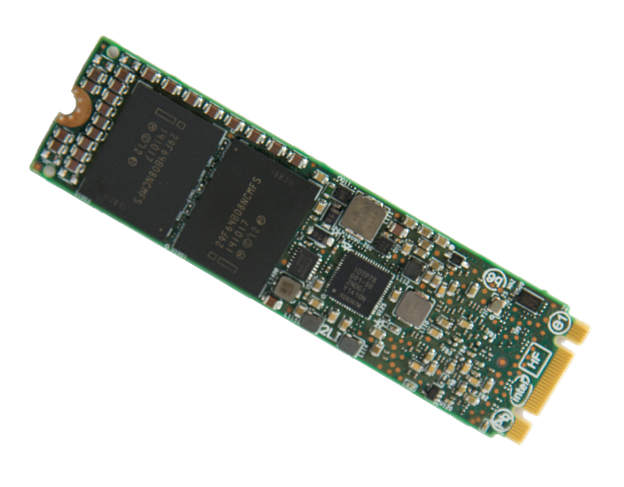Intel Launches M.2 and Larger Capacity 2.5″ SSD DC S3500 Models
Two years ago Intel released the DC S3500 and S3700 SSDs that marked as the company's first truly in-house SATA 6Gbps SSDs. Today Intel is adding M.2 form factor to the S3500 lineup along with higher capacity options in the regular 2.5" size.
The original S3500 came in capacities ranging from as small as 80GB to up to 800GB, but with the increasing demand for high density storage, Intel is adding 1.2TB and 1.6TB offerings. There is no change in the Flash Translation Layer (FTL) design to accommadate the extra NAND nor are there any other firmware or hardware changes, so the new models simply have more NAND on the board.
The 1.2TB and 1.6TB models provide higher randon write speeds, which makes sense given the additional NAND. Typically steady-state random write performance increases with more NAND thanks to increased parallelism, although only to a certain threshold since more NAND also adds tracking overhead. In the case of the S3500, the 1.2TB model appears to be the sweetspot by offering 18.5K random write IOPS, whereas the 1.6TB SKU drops that figure to 14.6K IOPS. Moreover, write endurance scales nearly linearly with the capacity as the 1.2TB is rated at 660TB and the 1.6TB at 880TB, while the existing 600GB and 800GB models are rated at 330TB and 450TB respectively.
The M.2 version of the S3500 is one of the first enterprise-class SSDs in M.2 form factor. Feature wise the M.2 models are equal to their 2.5" counterparts, meaning that there is full power-loss protection, end-to-end data protection and AES-256 encryption. The M.2 models come in M.2 2280 form factor and due to the space constraints, only 80GB, 120GB and 340GB capacities are available.
The M.2 models actually carry slightly higher random write speeds compared to their 2.5" counterparts, although that comes at the slight expense of random read performance. Since there is no metal chassis to help with heat dissipation, the M.2 models are a bit more exposed to thermal throttling, although Intel assured that as long as there is enough airflow in the system the drive should stay within its operating temperatures and not throttle itself.
At this stage M.2 hasn't really been adopted by the enterprise space yet, but there is a growing interest for it due to the space savings. Intel told me that they are in talks with multiple OEMs about integrating the M.2 S3500 to servers, but as of now the main market for the S3500 is embedded devices. This includes devices like ATMs, slot machines and cash registers, which are transitioning to SSDs to save space and increase reliability. The S3500 is certainly a good fit for that segment with its enterprise-class feature set, whereas most M.2 drives on the market lack features like full power-loss protection.
While many consumer drives are selling at below $0.50/GB, the enterprise features and additional validation increase the cost of the S3500. At right below the $1 per GB mark, the S3500 is, however, a rather competitive drive in the entry-level enterprise segment.





